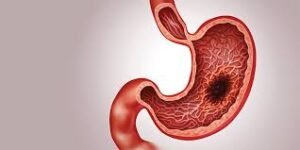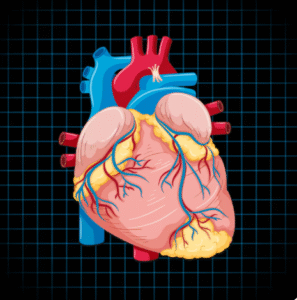Overview
Aortic valve replacement (AVR) is a surgical or minimally invasive procedure performed to replace a diseased or damaged aortic valve, one of the heart’s four valves that regulates blood flow from the heart to the aorta and onward to the rest of the body.
The aortic valve may fail due to stenosis (narrowing) or regurgitation (leakage). Left untreated, severe aortic valve disease can lead to heart failure, arrhythmias, or sudden cardiac death. Replacement can be done using mechanical valves, tissue valves (bioprosthetic), or newer transcatheter valves (TAVR/TAVI).
AVR can be performed via:
- Open-heart surgery – traditional approach with sternotomy.
- Minimally invasive surgery – small chest incisions for less trauma.
- Transcatheter aortic valve replacement (TAVR/TAVI) – catheter-based, often for high-risk or elderly patients.
In South Korea, aortic valve replacement is widely available in top cardiac centers. Hospitals use cutting-edge imaging, robotic-assisted surgery, and advanced valve technology, offering both traditional and transcatheter procedures for domestic and international patients.
Why It’s Done
Aortic valve replacement is recommended when the valve is severely narrowed or leaking, causing symptoms or putting the heart at risk.
Indications include:
- ➤ Aortic stenosis – narrowing of the aortic valve that reduces blood flow.
- ➤ Aortic regurgitation – leakage of blood back into the heart.
- ➤ Symptoms:
- Chest pain or angina
- Shortness of breath
- Fainting (syncope)
- Fatigue and reduced exercise tolerance
- ➤ Heart function decline: Left ventricular enlargement or reduced ejection fraction.
- ➤ High-risk of sudden cardiac death if untreated.
Benefits of aortic valve replacement:
- ✔️ Restores normal blood flow from the heart.
- ✔️ Relieves symptoms such as fatigue, chest pain, and breathlessness.
- ✔️ Prevents progression to heart failure or sudden cardiac events.
- ✔️ Improves long-term survival and quality of life.
Alternatives
There are some alternatives to valve replacement, though in severe cases, surgery is usually necessary:
- ➤ Medication therapy:
- Treats symptoms but does not fix the underlying valve problem.
- Includes beta-blockers, diuretics, ACE inhibitors, or vasodilators.
- ➤ Balloon valvuloplasty:
- Temporary widening of a narrowed valve using a catheter balloon.
- Often used as a bridge for high-risk patients or children.
- ➤ Watchful waiting:
- For mild or moderate disease without symptoms, with regular monitoring via echocardiography.
Key difference: Only surgical or transcatheter AVR provides definitive correction of severe aortic valve disease.
Preparation
Preparation is essential to ensure safety and optimal outcomes:
- ✅ Comprehensive cardiac evaluation: Echocardiography, ECG, coronary angiography, and blood tests.
- ✅ Medication review: Blood thinners may need to be paused; other medications adjusted.
- ✅ Fasting: No food or drink for 6–8 hours before surgery.
- ✅ Anesthesia evaluation: General anesthesia is required.
- ✅ Consent and counseling: Explanation of procedure, risks, recovery, and long-term lifestyle changes.
- ✅ Pre-surgery imaging: CT or MRI for minimally invasive or TAVR procedures.
How It’s Done
Aortic valve replacement can be performed via three main approaches:
1. Open-heart Surgery
- Sternotomy (chest opening) is performed.
- Heart is temporarily stopped and blood diverted via a heart-lung machine.
- Diseased aortic valve is removed.
- Mechanical or tissue valve is sewn into place.
- Heart restarted and chest closed.
2. Minimally Invasive Surgery
- Smaller chest incision than traditional surgery.
- May avoid full sternotomy, reducing trauma and recovery time.
- Heart-lung machine usually still required.
3. Transcatheter Aortic Valve Replacement (TAVR/TAVI)
- Catheter inserted via femoral artery or small chest incision.
- Collapsed valve advanced to the heart and expanded inside the old valve.
- Typically for elderly or high-risk patients who may not tolerate open-heart surgery.
Procedure duration:
- Open surgery: 3–5 hours.
- Minimally invasive: 2–4 hours.
- TAVR: 1–2 hours.
Hospital stay:
- Open surgery: 5–10 days.
- Minimally invasive: 4–7 days.
- TAVR: 2–5 days.
Recovery
Recovery depends on procedure type but usually involves gradual rehabilitation and follow-up:
Immediate post-op:
- ICU monitoring for 1–2 days.
- Pain control, wound care, and cardiac monitoring.
- Early mobilization encouraged to prevent complications.
At home:
- Avoid heavy lifting and strenuous activity for 6–8 weeks (longer for open surgery).
- Follow strict medication regimen, including blood thinners if mechanical valve is used.
- Monitor for fever, bleeding, swelling, or arrhythmias.
Long-term care:
- Regular echocardiography and cardiac check-ups.
- Lifestyle modifications: heart-healthy diet, exercise, blood pressure and cholesterol control.
- Mechanical valves require lifelong anticoagulation, whereas tissue valves may last 10–20 years.
Possible Complications
Although AVR is life-saving, potential complications include:
- ⚠️ Bleeding or infection at surgical site.
- ⚠️ Stroke or heart attack (rare).
- ⚠️ Arrhythmias – sometimes requiring pacemaker.
- ⚠️ Valve malfunction or degeneration (especially tissue valves).
- ⚠️ Blood clots – more common with mechanical valves; managed with anticoagulants.
- ⚠️ Kidney or lung complications post-surgery.
Modern surgical techniques, ICU care, and Korean hospital protocols minimize risks and ensure high success rates.
Treatment Options in Korea
South Korea offers world-class aortic valve replacement services:
Why choose Korea:
- 🏥 High-volume cardiac centers with excellent outcomes.
- 🏥 Experienced cardiac surgeons trained in open-heart, minimally invasive, and TAVR procedures.
- 🏥 Advanced valve technology: Mechanical, tissue, and latest-generation transcatheter valves.
- 🏥 Integrated post-op care and cardiac rehabilitation.
- 🏥 Medical tourism support: English-speaking staff, visa assistance, and hospital coordination.
- 🏥 Cost-effective care compared to US or Europe.
Top hospitals for AVR in Korea:
- Samsung Medical Center, Seoul
- Asan Medical Center, Seoul
- Severance Hospital, Seoul
- CHA Bundang Medical Center
Highlights
- ➤ Aortic valve replacement restores normal blood flow in patients with severe aortic stenosis or regurgitation.
- ➤ Available via open-heart surgery, minimally invasive surgery, or TAVR.
- ➤ Relieves symptoms such as chest pain, shortness of breath, and fatigue.
- ➤ Prevention of heart failure and sudden cardiac death.
- ➤ Recovery varies: 5–10 days in hospital, full activity in 6–8 weeks.
- ➤ Risks include bleeding, arrhythmias, valve malfunction, and rare cardiac events.
- ➤ South Korea offers advanced surgical techniques, high-quality valves, experienced surgeons, and cost-effective care, making it an excellent destination for AVR.













